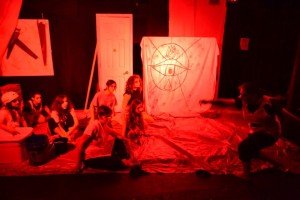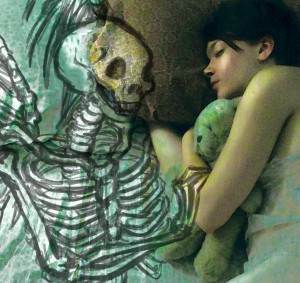
A backwoods exorcism by a snake-handling preacher—a community-building sleepover play about death—devised theater by dangerous women—and a gallery where live mannequins and their art intersect: well, shit. We can only hope that the newly-birthed Fringe/Fringe Festival turns out to be as freaky and compelling as its show synopses promise.
This, the across-the-board inventiveness of the plays featured in Fringe/Fringe, wasn’t intentional, says Joshua McLucas, festival co-founder (and co-artistic director of [redacted] Theater Company, the ones behind the sleepover play, Juniper Street). That’s just the way it worked out.
Fringe/Fringe came about in much the same way that SoLow Fest did five years ago. In fact, as McLucas tells me, much of the way that he runs the festival is based on what he learned from working with SoLow this year.
He and Swift Shuker (co-founder, Fringe/Fringe and co-AD, [redacted]) wanted to create a show. They considered performing it in the FringeArts Festival, but Shuker’s experience in the 2013 Fringe with their one-person show, XY Scheherazade, taught them that they couldn’t expect to draw much of an audience. They’d pay the fee for inclusion in the festival ($350) and probably buy an additional ad in the Festival Guide, and then they’d still only have their friends in the audience. The sheer volume of other shows by established performers would crowd them out.

About two weeks before the deadline for inclusion in FringeArts, McLucas combed the 2013 Guide and contacted every artist whose name he’d never heard of.
Most responses were supportive, and though in many cases people either didn’t have a show or were already enrolled in Fringe, two artists did join out of this pool. Shortly after the Fringe/Fringe website launched, a third artist signed up.
When I asked McLucas if Fringe/Fringe was going to happen next year, he answered with a firm yes.
“Mainly because I’ve already had someone say, please get in touch with me next year. I don’t know if [redacted] will be part of it, but I will try to get it together. [. . .] I think it has an important function in the community, and I want to keep it moving.”

All shows in Fringe/Fringe, just as in SoLow, are pay-what-you-can (PWYC). [redacted]’s piece, Juniper Street, is directed by Shuker and features six performers, including McLucas. It takes place in Shuker’s house and runs all night (the first act takes a fairly traditional play format, and audiences are allowed to leave when this is over). The goal, says Shuker, is to create a feeling of comfort and community; the most resounding symbol of comfort to them was sleeping. Thus: the sleepover play.
We here at Phindie love the Fringe Festival, both of the presented and neighborhood varieties, and our coverage of it will be extensive. But the existence of festivals like Fringe/Fringe and SoLow are evidence that the price and competition of the Neighborhood Fringe have perhaps reached a breaking point for aspiring companies. It may no longer be the place to produce that first show—or second, or third. Particularly with what threatens to be a funding dry-up for independent, non-”world class” artists (see: PEW).
For an article in the Inquirer, FringeArts president Nick Stuccio pointed out that Fringe is “happy to provide that tension,” the tension that pushes artists out of Fringe and makes them forge their own path. What he’s suggesting seems to be the truth: that “fringe” festivals are born out of economic pressure, and each one continues to exist because it fills a gap in the economic structure of a city’s arts scene, both for audiences and artists.

The festival started on August 8th with the opening of Snake-Bitten or The Dragon’s Breath: A Theatrical Exorcism, but the bulk of the festival is concentrated in the next two weekends, ending on August 31st. For a brief run-down of each of the four shows visit fringefringe.com.
